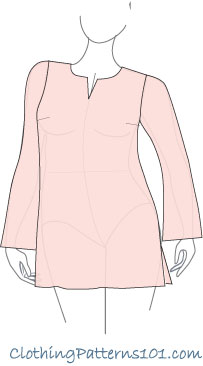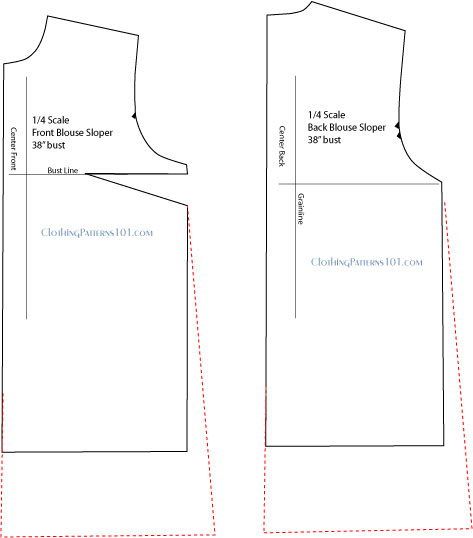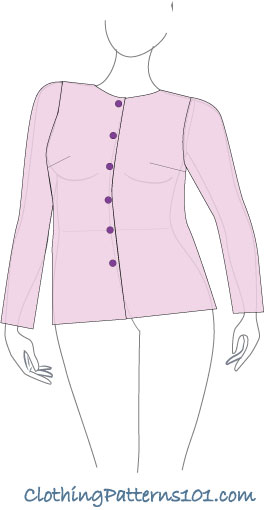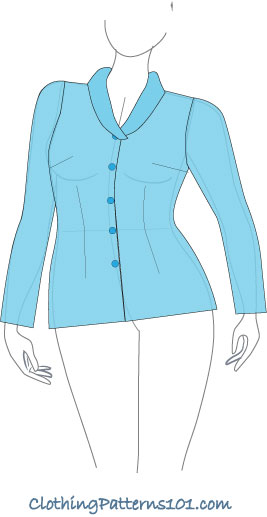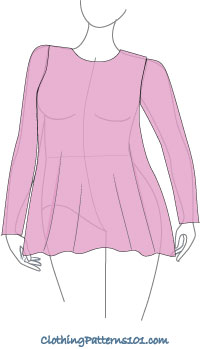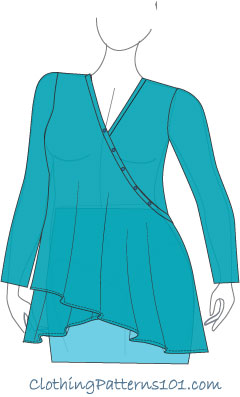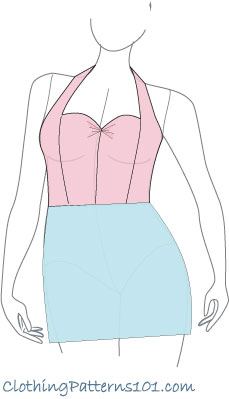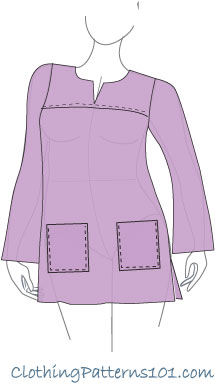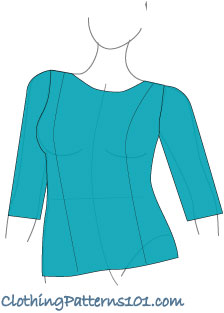- Clothing Patterns 101
- Blouse Styles
- Tunic Top
How to Draft a Tunic Top
A tunic is super easy to wear, and it hides a multitude of "sins"!
It will make you look long and lean, hide wide hips or a big belly, and looks great with skinny pants, jeans, or a shorter skirt. (Worn with a full pant leg or a longer skirt will make the outfit look out of proportion - remember to pair long with short, full with close-fitting!)
I like to keep the style simple, with straight or bell sleeves and a neckline without a collar.
But feel free to dress it up as you please!
You'll be using your basic blouse block for this pattern.
Before you create these dress, skirt or blouse styles, you'll need a well-fitting dress block. You can create one from a commercial pattern, fitting the block to your measurements and shape.
If you'd prefer to draft a block from your own measurements, Craftsy has courses in Patternmaking Basics: the Bodice Sloper and
Patternmaking Basics: the Skirt Sloper
|
The tunic is basically a longer version of a blouse or top, often a pull-over-the-head style. Vents at the hem allow easy movement (the hem can be too restricting without them, so I highly recommend simple vents). You can cinch the waist with a belt if you like, or just wear it straight. And it's so easy to draft! |
How to Draft the Tunic
A tunic is generally 4 - 6” longer than the blouse (which ends at the hip).
Add about 1” at each side seam, at the hem, and taper to meet the armhole of the blouse block.
There is no need to add to the bust or shoulders. Be sure to use your blouse block, not your bodice block. The blouse block already has a bit more ease. A natural fit, with a bust dart, will be most flattering.
You can also "hide" the bust dart with a yoke seam across the front.
A vent at each side seam, at the hem, will also allow for ease of movement.
Place a notch approximately 6” above the hemline to mark the length of the vent opening.
Make sure that the slight flare at the sides is the same front and back (the total width of the pattern may not be the same, but the angle and length of the side seams should match).
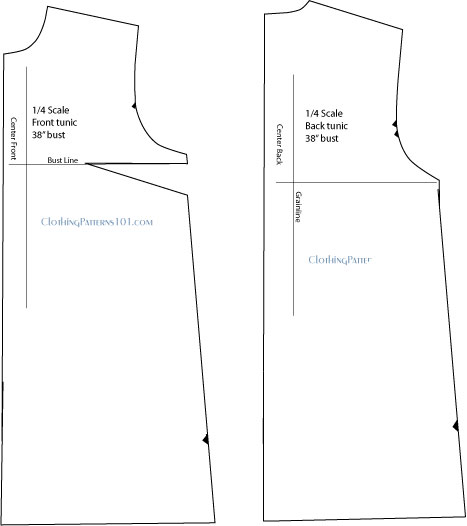
What's the Next Step?
Decide if you want to add sleeves, and if so, which style of sleeve.
You can also choose a different neckline or add a collar, too. I've shown a notched neck.
Then finish your pattern with a hem, seam allowances, and markings, and you're ready to make your new dress or blouse!
More Blouse Body Styles
|
Return to Clothing Patterns 101 Home Page
ClothingPatterns101.com does not sell the personal information of its users to anyone, ever.
